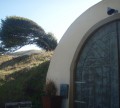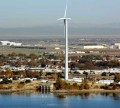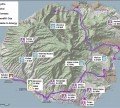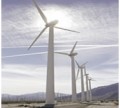Projects
Convivium Projects
Integrated Resource Planning Advisory with Puget Sound Energy
Convivum founder Terrance Meyer has served on Puget Sound Energy’s Integrated Resources Planning Advisory Group since 2009, advising Washington’s largest utility on matters of distributed generation and renewable energy as it integrates into their resource planning.
 Microgrid Consulting
Ekone Ranch: Washington, 2014
Ekone Ranch is a non-profit horse camp and educational center. Convivium joined a team of experts, staff, and board members to come up with a vision for the future of their off grid energy system. That vision is currently being implemented and the solar hot water system for student showers was installed spring of 2014.
 Off grid Solar Installation in Oahu, Hawaii
Mauna Farm: Hawaii
Convivium designed and installed the primary electrical system for the off grid Mauna Farm on Oahu, Hawaii.  The  system involved a solar array, smart inverter, and load diversion to supply kitchen, residences, and workshop.
Community Wind Power Development Support and Administration
Convivium was the primary technical resource for the development of Washington’s only two community subscribed wind projects, performing wind resource assessment, permitting, grant application, power purchase agreement negotiations, and construction supervision. Convivium continues to manage the day to day running of these projects.
 Community Solar Development Support and Administration
Convivium assisted two Cascade Community Solar projects in obtaining power purchase agreements, land leases, incentive payments, and contractor bids. Â Convivium oversaw the construction of these two community solar projects to completion and continues to manage both projects.
 Skagit Tribe Wind Resources Assessment
Upper Skagit Indian Tribe: Washington, 2011
Convivium Assisted the Upper Skagit Indian Tribe in obtaining financing for a wind energy assessment on their tribal lands and then performed the assessment evaluating three sites for both self generation and as a small wind farm. Â Convivium oversaw the installation of a meterological tower and performed SODAR remote monitoring to evaluate the wind speeds on site. Â An economic assessment was then performed to ascertaining the viability of wind as a resource for the Upper Skagit Indian Tribe.
 10 MW Photovoltaic Array Production Analysis
Ridgeline Energy: California, 2010
Terry Meyer
Convivium performed detailed computer modeling to estimate output from a proposed solar electric project in California for a confidential client.
Mid Scale Turbine
 Â West Wind Winery, Mount Constitution Sites, Hammond Port Authority, 2008
 West Wind Winery, Mount Constitution Sites, Hammond Port Authority, 2008
Terry Meyer
West Wind Winery in Pt. Rays California, Mount Constitution Sites on Orcas Island Washington, and the Hammond Port Authority in Hammond Indiana are independently seeking to put up a single mid-sized (~50-250 kW) wind turbine to offset their electrical loads. Convivium Renewable Energy is assisting each of them in separate projects with turbine selection, wind resource assessment, and feasibility analysis.
Zero net energy housing development
 Â Lopez Community Land Trust: Washington, 2007
 Lopez Community Land Trust: Washington, 2007
Dana Brandt, Terry Meyer
LCLT is currently building a 14 unit housing complex which they intend to have zero net energy use. Our professionals helped the planners of this development assess expected electrical demand, create a multifaceted approach to attaining zero net energy use, select suitable renewable energy technologies for their site (solar and wind in this case) and interface with the utility on interconnection of these resources. Their wind resource was quantified by erecting a 50 meter tower at their site and collecting data for nearly a year. The whole report can be found at the LCLT website. This project is currently under construction.
Past Member Collaborations
Net metered wind, small hydro, and ultracapacitor
 Palmdale Water District: California, 2005
Palmdale Water District: California, 2005
Terry Meyer
The Palmdale water district’s high energy prices and irritating power outages led them seeking energy alternatives. Initially a 950kW wind turbine was installed and commissioned with monthly reports keeping track of the turbine’s performance. The success of the wind project and a grant opportunity lead to a project investigating adding a micro hydro plant. The plant was installed at the water district’s off take from the California Aqueduct. The hydro was combined with the wind turbine, combustion generators and a novel ultracapacitor energy storage system. This system gives the pumping station the ability to switch seamlessly on or off grid, manage their peak energy consumption, and manage power quality. While at Black & Veatch in 2005 Mr. Meyer was integral to the team that worked on this project.
Renewable Energy Integrated Resource Plan
 Kauai Island Utility Cooperative: Hawaii, 2005
Kauai Island Utility Cooperative: Hawaii, 2005
Terry Meyer
The Island of Kauai wanted a thorough renewable energy component to their integrated resource plan in 2005. Mr. Meyer was integral to the team working on this project while at Black & Veatch. Suitable renewable energy technologies were defined and resources on the island were identified on a hypothetical project basis. Cost of energy was estimated for each hypothetical project (spanning multiple technologies) to develop a supply curve. To see the full report click here. Partially as a result of this study KIUC has made a dramatic shift in its operating plan. The following quote is from the KIUC 2008 to 2023 strategic plan:
KIUC is committing itself to generate at least 50% of its electricity renewably without burning fossil fuels within 15 years. Continuing business as usual is something we all now know is unacceptable. We must stop depending on oil to generate most of our electricity when its rising price is completely beyond our control and adversely affects our members. It is wrong to continue using oil to generate most of our electricity now that we understand this is causing our planet’s climate to change and destroying the environment our children will one day inherit. KIUC’s goal is much more ambitious than the previously established goals. It requires a paradigm shift that will result in a radical restructuring of the way we do business.
Wind Energy Resource Assessment
 Prairie Band Pottawatomie Nation: Kansas
Prairie Band Pottawatomie Nation: Kansas
Terry Meyer
The Prairie Band Pottawatomie are interested in investing revenue from their casino into sustainable economic development for their reservation. The project consisted of assessing the potential for wind power for both on site use and development of a wind farm. Three 50 meter meteorological towers were commissioned and monthly data reports were generated and presented to tribal staff. Mr. Meyer was also involved in on-reservation community outreach activities.
Renewable Energy Tribal Utility Study
 Viejas Tribal Government: California
Viejas Tribal Government: California
Terry Meyer
Mr. Meyer helped develop a unique energy master plan for the Viejas Tribe, which owns a casino and outlet mall near San Diego. The investigation included load profiles, energy markets, investigation of alternative electrical supply and development of cogeneration, renewable energy, distributed generation, and natural gas-fired generation.Your browser may not support display of this image. The project received DOE funding for feasibility study of a renewable energy based tribal utility. The study includes resource assessment, energy storage technology characterization, and project planning to meet 100 percent of the tribe’s energy needs from renewable energy sources.
Renewable Energy Transmission Line Study
 Los Angeles Department of Water and Power: California
Los Angeles Department of Water and Power: California
Terry Meyer
The Las Angeles Department of Water and Power (LADWP) is seeking to increase its renewable energy portfolio. One particular transmission line heading east from Las Angeles currently has wind, geothermal, and small hydro projects on it and there is interest in increasing the amount of each of these greatly as well as including solar thermal projects. Mr. Meyer was integral to a study showing that the individual variability of each of these combined with some short term Dispatchability of the hydro resource allowed for a capacity of 750 MW of installed capacity to operate on a 550 MW line with minimal curtailment. This will allow for significantly more renewable generation build out before transmission expansion is needed.
Â